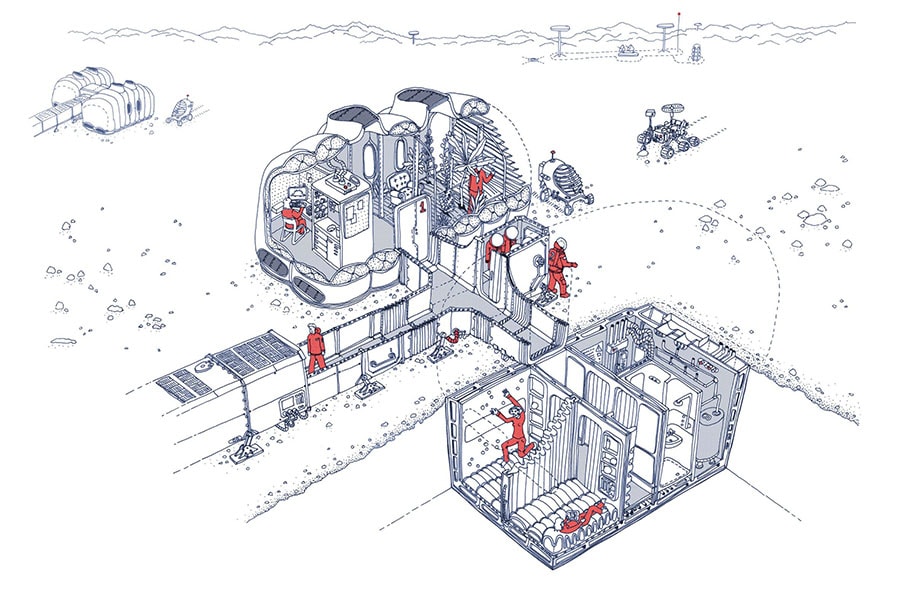
Life on Mars: How our homes would look on the red planet
In partnership with British firm Hugh Broughton Architects and design studio Pearce+, artists Ella Good and Nicki Kent created an inflatable house, made entirely of recycled materials. This work was designed as part of the public art project "Building a Martian House," which explores how people would live on
Mars
 Two English artists from Bristol recently presented a strange house that could be ours if we lived on the planet Mars.
Image: Courtesy of Hugh Broughton Architects and Pearce
Two English artists from Bristol recently presented a strange house that could be ours if we lived on the planet Mars.
Image: Courtesy of Hugh Broughton Architects and Pearce
Two English artists from Bristol recently unveiled a peculiar house that could be ours if we lived on the planet Mars. The hidden message behind this work? To build awareness among the general public by inviting them to think about the limited resources we have on Earth.
The idea of exploring the planet Mars and making it habitable as a kind of escape plan from Earth in order to preserve the human species has long been the subject of science fiction scenarios but also more serious endeavors. In fact, millions of dollars have been invested in the exploration of the red planet, with a view to developing space tourism, or even some day settling there in the eventuality that the Earth becomes uninhabitable. It's a hypothesis that has earned Mars the nickname of "Planet B"... and that has inspired a work by two English artists Ella Good and Nicki Kent, from Bristol.
In partnership with British firm Hugh Broughton Architects and design studio Pearce+, the artists created an inflatable house, made entirely of recycled materials. This work was designed as part of the public art project "Building a Martian House," which explores how people would live on Mars. Their installation was on display for more than two months on the docks in downtown Bristol, where passers-by were invited to take part in furnishing this strange capsule structure with orange-pink walls; inside one observes gardening hoses and plants―for instance, herbs.
Behind the house is seven years of work and collaboration with scientists, architects, engineers and designers. The structure is powered by solar panels and designed to be able to withstand environmental challenges that could be encountered on Mars, such as temperatures of -63°C and exposure to radiation. Covered with a golden roof made of aluminum sheets and built from a pair of old shipping containers, this artistic creation is full of everyday objects, designed with great care and sometimes with surprising details: a pillow, for example, has been filled with lavender and mustard seeds and natural, plant-based dyes were used to create color on textiles.
But, far from standing as a promise of a peaceful future existence, this "house" invites us on the contrary to reflect on the limited resources we would have if we lived on Mars. "The project uses the scenario of moving to Mars as a lens to reflect on our lives here on Earth – asking how we live now and how would we like to live in the future," Ella Good and Nicki Kent Explained to London-based design and architecture magazine Dezeen.







